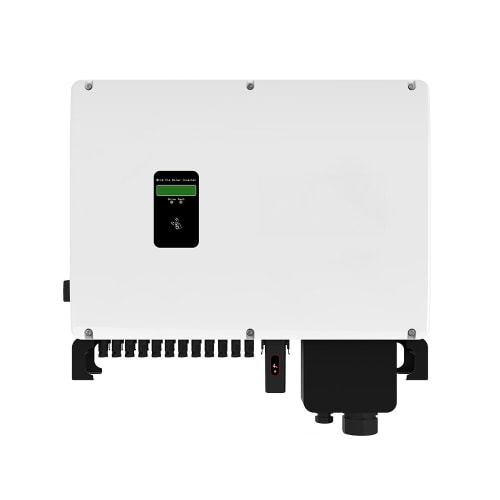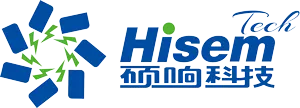NEWS
Welcome to My Blog!
Before we dive into the content, if you’re interested in our products or have any questions, please feel free to visit our Contact Us page on the website. Our team is ready to assist you with inquiries, orders, or any support you may need.
Now, let’s get started on our journey together. I hope you find the content here insightful, engaging, and valuable.
Table of Contents
In recent years, the adoption of solar energy has surged, with solar panel systems becoming more popular among homeowners and businesses. A crucial component of these systems is the solar panel inverter, which plays an essential role in converting the solar energy collected by panels into usable electricity. In this comprehensive guide, we’ll explore what solar panel inverters are, how they work, the different types available, and how to choose the right one for your solar power system.
What is a Solar Panel Inverter?

A solar panel inverter is a device that converts the direct current (DC) electricity generated by solar panels into alternating current (AC) electricity, which is the type of power used in most homes and businesses. Without an inverter, the energy captured by solar panels would be unusable in standard electrical systems.
Definition of a Solar Panel Inverter
A solar inverter is an essential part of any solar energy system, enabling the energy produced by your panels to be converted into a form that can power your home’s appliances, lighting, and other electrical devices. The inverter ensures that the energy produced is safe and efficient.
Types of Solar Panel Inverters
There are three main types of solar inverters used in residential and commercial solar systems:
- String Inverters: This is the most common type of inverter used in solar systems. It is connected to a series (or “string”) of solar panels and converts the power from all of them at once.
- Micro Inverters: These are smaller inverters attached to each individual solar panel. They provide greater flexibility and are especially useful in systems where shading or varying panel orientations are a concern.
- Hybrid Inverters: Hybrid inverters combine solar power conversion with the ability to manage battery storage. They allow you to store excess energy for later use, making them ideal for off-grid systems or homes with backup power needs.
How Does a Solar Panel Inverter Work?
Solar panel inverters perform the crucial task of converting the DC power produced by solar panels into AC power. This is done through a process called inversion, which involves switching the direction of the electrical current rapidly. The inverter also adjusts the voltage to match the electrical system of your home or business.
- Converting DC to AC Power: Solar panels produce DC electricity when they absorb sunlight. The inverter converts this DC into AC, allowing it to be used by household appliances and systems.
- Integrating with the Solar Power System: The inverter is connected to the solar panels and grid, ensuring the power is safely sent to your home or sent back to the grid if you’re generating more power than needed.
Why Do You Need a Solar Panel Inverter?
Without a solar inverter, your solar panels would be unable to produce usable power for your home or business. The inverter is crucial to the functionality and efficiency of a solar system.
The Role of Inverters in Solar Systems
Solar inverters are responsible for converting the raw energy collected by solar panels into a usable form. They play a central role in ensuring your system’s output matches the electricity needs of your home. In addition, inverters also monitor the solar panel system’s performance, ensuring it operates efficiently.
Impact on Energy Efficiency
Solar inverters are designed to maximize the amount of energy that is converted and used. High-quality inverters can significantly improve the overall efficiency of your solar system by reducing energy loss during the conversion process. The higher the inverter’s efficiency, the more energy you can utilize.
Maximizing Your Solar Panel’s Performance
An inverter’s performance directly impacts how much of the energy produced by your solar panels can be used. By choosing the right inverter, you ensure that your system operates at its peak capacity, especially during fluctuating sunlight conditions.
Cost and Energy Savings
While solar inverters can be an initial investment, they can pay for themselves over time by reducing electricity bills. A high-quality inverter ensures optimal system performance, which translates into more savings. Additionally, a solar inverter’s ability to allow energy storage can help save money by using solar energy when grid rates are higher.
How to Choose the Right Solar Panel Inverter

Choosing the right inverter is crucial to optimizing the performance and longevity of your solar power system. Here are some key factors to consider when selecting a solar panel inverter:
Factors to Consider When Choosing a Solar Inverter
- System Size and Type: Depending on the size of your solar installation, different inverters will be suitable. For larger systems, string inverters or hybrid inverters are usually preferred, while micro inverters may be more suitable for smaller systems or those with shading issues.
- Efficiency and Output: Look for inverters with high efficiency ratings to maximize the energy output of your system. A highly efficient inverter will minimize energy losses during the conversion process.
- Warranty and Support: Inverters come with varying warranty periods, so choosing one with a long warranty is essential. A reputable manufacturer offering good customer support can help if issues arise.
Best Solar Inverters for Residential Use
For residential systems, string inverters and micro inverters are the most common choices. String inverters are ideal for homeowners with relatively uniform solar panel installations, while micro inverters provide better performance in situations with shading or varying panel orientations.
Best Solar Inverters for Commercial Use
For commercial systems, hybrid inverters or central inverters are often the best choice, as they can handle the higher power demands of larger installations. These inverters can also be integrated with battery storage systems to ensure reliability during power outages.
Comparing String Inverters vs Micro Inverters
String inverters are cost-effective and easy to maintain, but they are less effective in situations with partial shading or uneven panel orientations. Micro inverters, on the other hand, perform better in such conditions and allow for greater monitoring and flexibility, although they tend to be more expensive.
Installation and Maintenance of Solar Panel Inverters

Proper installation and maintenance of your solar inverter will help maximize its lifespan and performance.
How to Install a Solar Panel Inverter
Installing a solar inverter typically requires professional expertise to ensure safety and proper system integration. The installation involves wiring the inverter to the solar panels and the electrical grid, ensuring that the system is properly grounded and complies with local electrical codes.
- Step-by-Step Installation Process: A certified solar installer should handle the entire installation, which typically includes mounting the inverter, wiring it to the solar panels, and connecting it to the electrical system.
- Professional Installation vs DIY: While DIY installation might seem cost-effective, it’s important to note that improperly installed inverters can result in system inefficiency, safety risks, or even damage to the system.
Regular Maintenance Tips for Solar Inverters
Maintaining your inverter is crucial to ensure optimal performance. Regular maintenance includes cleaning the unit, checking for any signs of wear or malfunction, and ensuring that the wiring and connections are secure.
- Cleaning and Inspections: Periodically clean the inverter’s surfaces to prevent dust and debris buildup, which could reduce efficiency.
- Common Issues and Troubleshooting: Common inverter issues include system shutdowns, error codes, and communication failures. Always consult the manufacturer’s guide or contact a professional for repairs.
How to Fix Common Solar Inverter Problems
Inverter problems can sometimes be resolved by troubleshooting the system. If the inverter displays error codes or stops working, you may need to reset the system or contact a technician for diagnosis and repair.
Solar Panel Inverter Efficiency and Performance
Solar inverter efficiency is critical in maximizing the power output of your solar energy system. Higher efficiency means more energy is converted and used, leading to greater savings.
Factors Affecting Solar Inverter Efficiency
Several factors can influence the efficiency of your inverter, including the quality of the inverter, the condition of the system, and environmental conditions like temperature and shading.
How to Improve Inverter Efficiency
Regular maintenance and ensuring proper system integration can help improve inverter efficiency. Also, selecting an inverter with high efficiency ratings at the time of installation will provide better long-term performance.
Comparing Solar Inverter Performance by Brands
Different brands offer varying performance levels, so it’s important to compare models and read reviews before making a purchase. Brands like SMA, Fronius, and SolarEdge are well-known for their high-efficiency inverters.
Solar Inverter Heat and Temperature Management
Excessive heat can degrade inverter performance. Ensuring that the inverter is placed in a well-ventilated area will help maintain optimal temperature and efficiency.
Cost of Solar Panel Inverters

The cost of a solar inverter varies based on its type, capacity, and features. While the initial cost might seem high, the savings on your energy bills make it a valuable investment in the long run.
How Much Does a Solar Panel Inverter Cost?
The price of solar inverters ranges between $1,000 and $3,000 for residential models, depending on the brand, features, and power capacity.
Price Differences Between Inverter Types
String inverters are generally more affordable than micro inverters, but micro inverters may provide better performance in systems with shading or uneven panel orientations.
Return on Investment with Solar Inverters
Although the upfront cost of solar inverters can be significant, the energy savings over time can make them a cost-effective investment. The payback period typically ranges from 5 to 10 years, depending on your energy usage and the local electricity rates.
FAQ
What is the Average Lifespan of a Solar Inverter?
The average lifespan of a solar inverter is around 10-15 years, but this can vary based on the type and brand.
Can I Use a Solar Inverter Without Batteries?
Yes, you can use a solar inverter without batteries in grid-tied systems. However, adding batteries to your system allows you to store excess energy for use during power outages.
How Do I Know if My Solar Inverter Is Faulty?
Common signs of a faulty inverter include error codes, system shutdowns, or a noticeable drop in energy output. Consult the inverter’s user manual or contact a technician for troubleshooting.
Are Solar Inverters Environmentally Friendly?
Yes, solar inverters are environmentally friendly because they enable the use of renewable solar energy. Additionally, many manufacturers use recyclable materials in their inverters.
Ready to Harness the Power of the Sun?
Take the next step towards energy independence and savings. Contact us today for a free consultation and get expert advice on choosing the perfect solar panel inverter for your home or business. Let’s start building your sustainable future!

